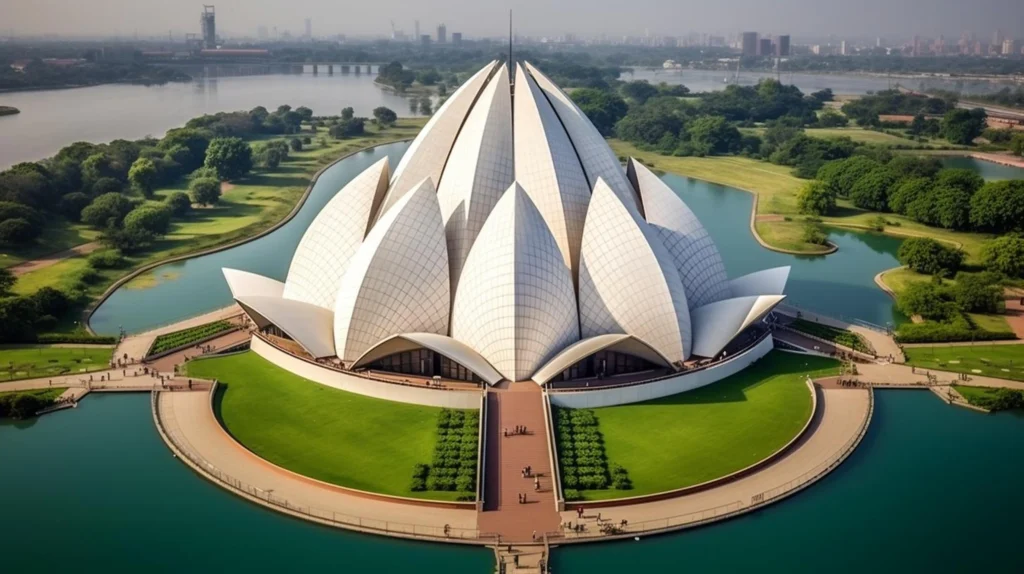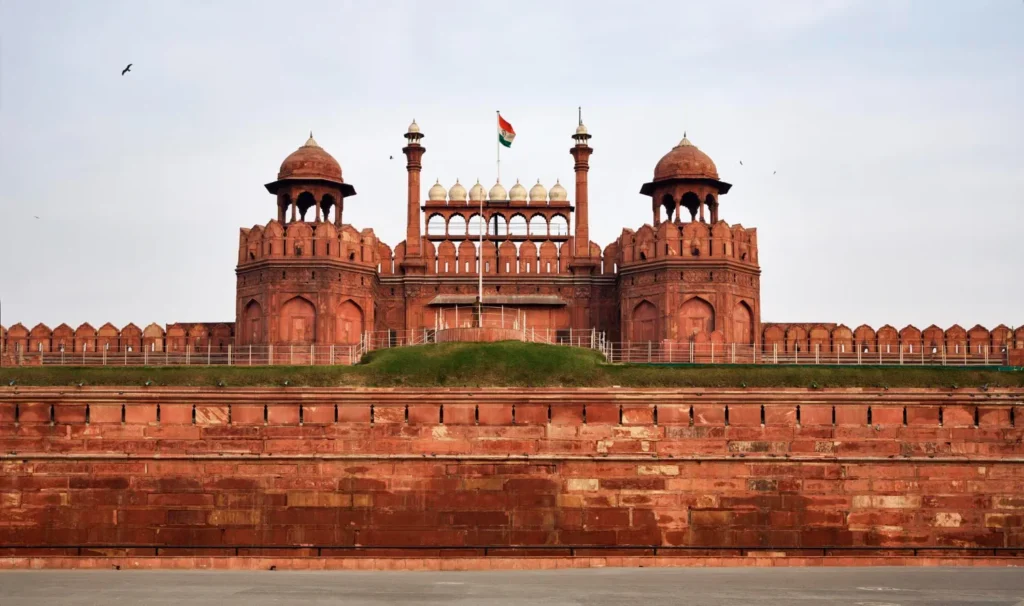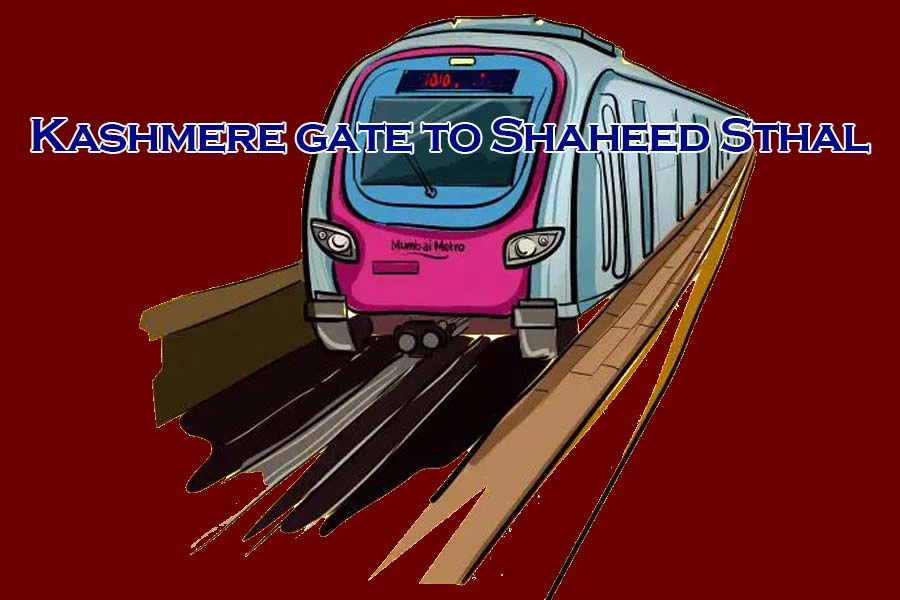
Introduction
Delhi, A Comprehensive Guide to the Heart of India, Explore New Delhi’s rich history, vibrant culture, top attractions, and local experiences in this detailed guide. Delhi, India’s sprawling capital city, is a vibrant mix of tradition and modernity. Steeped in history yet bustling with contemporary life, Delhi offers a plethora of experiences for both residents and visitors. From ancient monuments and diverse cuisine to bustling markets and modern infrastructure, Delhi is a city of contrasts and convergence. This guide aims to take you on a comprehensive journey through Delhi, highlighting its major regions: South Delhi, North Delhi, East Delhi, West Delhi, and Central Delhi.
A Brief History of Delhi
Delhi’s history dates back several millennia. It has been the seat of power for many empires, including the Maurya, Gupta, Mughal, and British Empires. Each of these dynasties left a unique mark on the city, contributing to its rich cultural tapestry.
Ancient Period: The earliest reference to Delhi is found in the Mahabharata, where it is referred to as Indraprastha. Archaeological evidence suggests that the area was inhabited as early as the 6th century BCE.
Medieval Period: During the medieval period, Delhi saw the rise and fall of several dynasties, including the Tomars, Chauhans, and the Delhi Sultanate. The city’s strategic location made it a coveted prize for conquerors.
Mughal Era: The Mughal era was a golden period for Delhi. Emperors like Akbar, Jahangir, and Shah Jahan adorned the city with architectural marvels such as the Red Fort, Jama Masjid, and Humayun’s Tomb.
British Rule: Delhi became the capital of British India in 1911, leading to significant urban development, including the construction of New Delhi with its wide boulevards and colonial architecture.
Post-Independence: After India gained independence in 1947, Delhi continued to grow, emerging as a major political, cultural, and commercial center.
South Delhi: A Blend of Elegance and Modernity

South Delhi is known for its upscale neighborhoods, lush green parks, and historic landmarks. It is a hub for shopping, dining, and cultural activities.
Areas Comes under South Delhi
- Hauz Khas Village
- Greater Kailash
- Saket
- Lajpat Nagar
- Nehru Place
- Defence Colony
- South Extension
- Green Park
- Vasant Kunj
- Qutub Minar
- Humayun’s Tomb
- Lotus Temple
- Hauz Khas Complex
- Dilli Haat
- Tughlaqabad Fort
- Garden of Five Senses
- Kalka Ji Mandir
- Chhatarpur Temple
- Mehrauli Archaeological Park
- Select Citywalk Mall
- ISKCON Temple
Historical Landmarks
- Qutub Minar: This UNESCO World Heritage Site is the tallest brick minaret in the world. Built in the 12th century, it stands as a testament to Delhi’s rich history.
- Lotus Temple: Known for its unique lotus-shaped architecture, this Bahá’í House of Worship is a place of serenity and architectural brilliance.
- Humayun’s Tomb: This magnificent Mughal tomb, built in the 16th century, is considered a precursor to the Taj Mahal.
Shopping and Dining
- Hauz Khas Village: A trendy neighborhood known for its eclectic mix of boutiques, cafes, art galleries, and vibrant nightlife.
- Dilli Haat: An open-air market offering a wide range of handicrafts, textiles, and traditional Indian cuisine from various states.
- Select Citywalk: A premier shopping mall featuring international and Indian brands, along with a variety of dining options.
Parks and Recreation
- Deer Park: A tranquil green space perfect for jogging, picnicking, and bird-watching, with a scenic lake and historical ruins.
- Lodhi Garden: A popular park featuring beautiful gardens, historic tombs, and walking paths, making it a favorite spot for locals and tourists alike.
- Garden of Five Senses: A unique park designed to stimulate the five senses, with themed gardens, sculptures, and cultural events.
North Delhi: A Historical Heartland

North Delhi is characterized by its historical significance, bustling markets, and academic institutions. It is a blend of the old and the new, offering a glimpse into the city’s past and present.
Areas come under North Delhi
- Chandni Chowk
- Kamla Nagar
- Civil Lines
- Delhi University North Campus
- Kashmiri Gate
- Red Fort
- Jama Masjid
- Raj Ghat
- St. James’ Church
- Gurudwara Sis Ganj Sahib
- Coronation Park
- Kamla Nehru Ridge
- Nigambodh Ghat
- Mutiny Memorial
- Khari Baoli
Historical Landmarks
- Red Fort: A UNESCO World Heritage Site, this imposing red sandstone fort was the main residence of Mughal emperors for nearly 200 years.
- Jama Masjid: One of the largest mosques in India, built by Shah Jahan in the 17th century, offering stunning views of Old Delhi from its minarets.
- St. James’ Church: One of Delhi’s oldest churches, built in the early 19th century by Colonel James Skinner.
Markets and Shopping
- Chandni Chowk: One of the oldest and busiest markets in Delhi, known for its narrow lanes, diverse shops, and delectable street food.
- Kamla Nagar: A popular shopping and hangout spot for students, offering a mix of street fashion, accessories, and eateries.
- Karol Bagh: A bustling commercial area with a wide range of shops, from electronics to clothing and jewelry.
Educational Institutions
- University of Delhi: One of India’s premier universities, known for its diverse student body, academic excellence, and vibrant campus life.
- St. Stephen’s College: A prestigious college under the University of Delhi, renowned for its academic rigor and illustrious alumni.
- Hindu College: Another esteemed institution under the University of Delhi, known for its strong emphasis on academics and extracurricular activities.
East Delhi: A Growing Urban Hub

East Delhi is a rapidly developing area with a mix of residential, commercial, and recreational spaces. It offers a more affordable lifestyle compared to other parts of the city.
Areas come under East Delhi
- Mayur Vihar
- Preet Vihar
- Laxmi Nagar
- Anand Vihar
- Karkardooma
- Akshardham Temple
- Yamuna Sports Complex
- Ghazipur Phool Mandi
- Shahdara District Park
- Shanti Van
- East Delhi Mall
- Cross River Mall
Residential Areas
- Mayur Vihar: A well-planned residential area with modern amenities, parks, and good connectivity to other parts of Delhi.
- Patparganj: Known for its residential societies, schools, and proximity to commercial centers.
- Preet Vihar: A bustling neighborhood with a mix of residential and commercial establishments, including markets and educational institutions.
Commercial and Recreational Spaces
- Anand Vihar: A major transit hub with a railway station, bus terminal, and metro connectivity, along with shopping and dining options.
- Laxmi Nagar: A prominent commercial area known for its electronics market, coaching centers, and eateries.
- Akshardham Temple: A modern Hindu temple known for its stunning architecture, cultural exhibitions, and musical fountain shows.
Parks and Green Spaces
- Sanjay Lake: An artificial lake surrounded by a park, offering boating, jogging, and picnicking opportunities.
- Yamuna Sports Complex: A state-of-the-art sports facility with amenities for various sports, including cricket, tennis, and swimming.
- Swarn Jayanti Park: A large park with beautifully landscaped gardens, walking paths, and recreational facilities.
West Delhi: A Bustling Metropolis
West Delhi is a densely populated area known for its diverse communities, vibrant markets, and cultural landmarks. It offers a mix of traditional and modern lifestyles.
Areas Comes under West Delhi
- Rajouri Garden
- Janakpuri
- Tilak Nagar
- Punjabi Bagh
- Paschim Vihar
- Pacific Mall
- Tihar Jail
- Jwalaheri Market
- Dilli Haat
- Madipur Park
- Fun Cinemas
- District Park
- Bhuli Bhatiyari Ka Mahal
- Vishal Cineplex
- Lal Sai Mandir
Markets and Shopping
- Rajouri Garden: A popular shopping and dining destination with malls, markets, and a variety of eateries.
- Janakpuri: A well-established residential and commercial area with markets, schools, and recreational facilities.
- Tilak Nagar: Known for its bustling market offering a wide range of products, from clothing to electronics and household items.
Cultural and Recreational Spots
- Pacific Mall: A large shopping mall with international and Indian brands, entertainment options, and dining facilities.
- Dilli Haat Janakpuri: An open-air market showcasing crafts, textiles, and cuisine from different states of India.
- Jheel Park: A green space with walking paths, playgrounds, and a lake, providing a serene environment for relaxation.
Historical Landmarks
- Tihar Jail: One of the largest prison complexes in South Asia, known for its rehabilitation programs and vocational training for inmates.
- Fatehpuri Masjid: A 17th-century mosque built by Fatehpuri Begum, one of Shah Jahan’s wives, located near Chandni Chowk.
- Jhandewalan Temple: A prominent Hindu temple dedicated to the goddess Adi Shakti, attracting devotees from across the city.
Central Delhi: The Heart of the Capital
Central Delhi is the administrative and political hub of the city, home to iconic landmarks, government buildings, and lush green spaces. It represents the power and grandeur of the nation’s capital.
Areas comes under Central Delhi
- Janpath
- Khan Market
- Rajpath
- India Gate Circle
- India Gate
- Rashtrapati Bhavan
- Parliament House
- Jantar Mantar
- Gurudwara Bangla Sahib
- Agrasen ki Baoli
- National Museum
- National Gallery of Modern Art
- Cathedral Church of the Redemption
- Indira Gandhi Memorial Museum
- Rail Museum
- Lodhi Garden
Iconic Landmarks
- India Gate: A war memorial dedicated to Indian soldiers who died in World War I, surrounded by lush lawns and fountains.
- Rashtrapati Bhavan: The official residence of the President of India, an architectural marvel with sprawling gardens.
- Parliament House: The seat of India’s Parliament, a circular building designed by British architects Sir Edwin Lutyens and Sir Herbert Baker.
Cultural and Recreational Spots
- Connaught Place: A central business district known for its colonial-era architecture, high-end shops, restaurants, and entertainment options.
- National Museum: One of the largest museums in India, showcasing a vast collection of artifacts spanning over 5,000 years of history.
- Jantar Mantar: An astronomical observatory built in the 18th century, featuring a collection of architectural instruments used for celestial observations.
Parks and Green Spaces
- Central Park: A large park in Connaught Place offering a serene environment, musical fountains, and open spaces for relaxation.
- Talkatora Gardens: A historical garden with Mughal-era roots, offering beautiful landscapes, walking paths, and a sports complex.
- Indira Gandhi Memorial: A museum and memorial dedicated to the former Prime Minister, set in her former residence with beautiful gardens.
Cuisine: A Gastronomic Journey Through Delhi
Delhi’s culinary scene is a reflection of its diverse cultural heritage. From street food to fine dining, the city offers a plethora of gastronomic delights.
Street Food
- Chole Bhature: A popular North Indian dish consisting of spicy chickpeas and deep-fried bread, often enjoyed for breakfast or lunch.
- Paranthas: Stuffed flatbreads with a variety of fillings, served with curd, pickles, and chutneys, commonly found in Paranthe Wali Gali.
- Golgappa/Pani Puri: Hollow puris filled with spicy tamarind water, potatoes, and chickpeas, a favorite street snack.
Mughlai Cuisine
- Butter Chicken: A rich and creamy chicken dish cooked in a tomato-based gravy, best enjoyed with naan or rice.
- Biryani: A fragrant rice dish cooked with meat, spices, and saffron, often served with raita and salad.
- Kebabs: Grilled meat skewers, including varieties like seekh kebabs and galouti kebabs, known for their succulent flavors.
Vegetarian Delights
- Paneer Tikka: Marinated and grilled cubes of paneer (Indian cottage cheese), served with mint chutney.
- Aloo Tikki: Spiced potato patties, often served with chutneys and yogurt, a popular street food snack.
- Rajma Chawal: A comforting dish of red kidney beans cooked in a spicy gravy, served with rice.
International Cuisine
- Chinese: Delhi offers a variety of Chinese cuisine, from authentic dim sums to Indo-Chinese fusion dishes.
- Italian: Pizzerias and Italian restaurants are popular in Delhi, offering wood-fired pizzas, pasta, and more.
- Continental: Many restaurants serve continental cuisine, including steaks, sandwiches, and salads.
Conclusion
Delhi is a city of endless exploration and discovery. Its rich history, diverse culture, and modern amenities make it a captivating destination for anyone seeking to experience the essence of India. From the historic charm of Old Delhi to the contemporary vibes of South Delhi, each region has its unique story to tell. Whether you’re a history buff, a foodie, a shopaholic, or a nature lover, Delhi has something to offer for everyone. So, pack your bags and embark on a journey to explore the myriad facets of India’s capital city.
FAQs
Q.1. Which part of Delhi is Karol Bagh?
A. Karol Bagh is located in Central Delhi, known for its bustling markets and diverse shopping options.
Q.2. Is Central Delhi urban or rural?
A. Central Delhi is urban, featuring prominent government buildings, commercial areas, and historical landmarks.
Q.2. Why is North Delhi famous?
A. North Delhi is famous for its historical sites, bustling markets like Chandni Chowk, and prestigious educational institutions.
Q.3. Why is East Delhi famous?
A. East Delhi is known for its rapidly developing infrastructure, residential areas, and landmarks like the Akshardham Temple.
Q.4. Which is better, South Delhi or West Delhi?
South Delhi is generally considered more upscale and green, while West Delhi is known for its bustling markets and diverse communities.
Q.5. Why is South Delhi expensive?
A. South Delhi is expensive due to its upscale neighborhoods, proximity to business districts, high-quality amenities, and green spaces.
Q.6. Is South Delhi a posh area?
A. Yes, South Delhi is considered a posh area with affluent neighborhoods, luxury properties, and a high standard of living.



The information shared is of top quality which has to get appreciated at all levels. Well done…
Aw, this was a really nice post. Spending some time and actual effort to produce a really good article… but what can I say… I put things off a whole lot and don’t manage to get nearly anything done.
I appreciate the balanced perspective here.